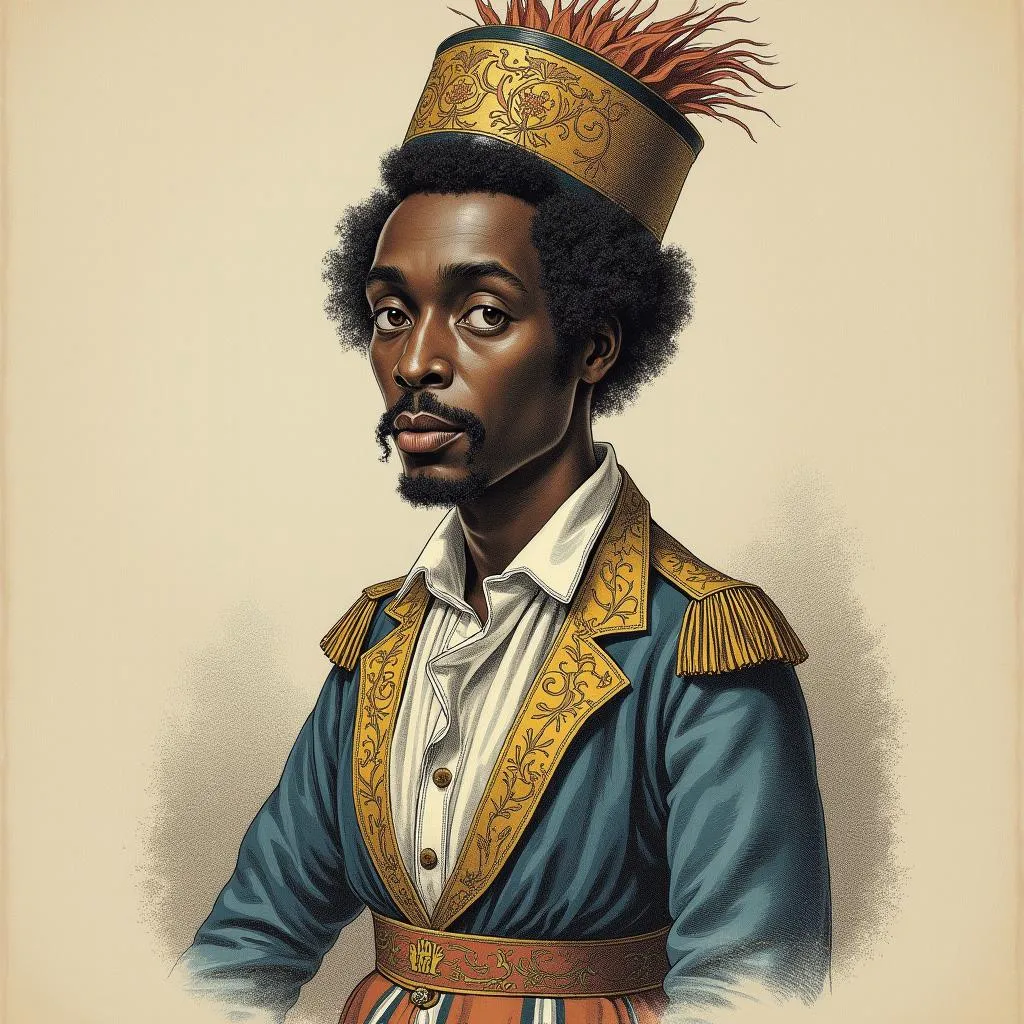18th Century Representations of Africans: A Look at Historical Portrayals
The 18th century witnessed a period of significant global transformation, including the rise of colonialism and the transatlantic slave trade. These events had a profound impact on Africa and its people, shaping how they were perceived and represented in European art, literature, and intellectual discourse. This era saw the emergence of numerous depictions of Africans, often characterized by racial stereotypes and prejudices that would have lasting consequences for African identity and the understanding of African history.
Understanding the Context: Colonialism and the Slave Trade
The 18th century was a time when European powers embarked on ambitious colonial ventures, seeking to expand their influence and control over vast territories across the globe. This period saw the establishment of European empires in Africa, Asia, and the Americas, driven by economic interests and the desire for new resources and markets.
The transatlantic slave trade, a brutal system of forced labor that transported millions of Africans across the Atlantic, was an integral part of this colonial project. This trade fueled the growth of European economies, particularly in the Americas, but it also led to the suffering and dehumanization of countless Africans.
Depictions of Africans in 18th Century Art and Literature
The colonial context and the slave trade heavily influenced how Africans were depicted in 18th-century art and literature. While some representations sought to portray Africans with a degree of realism and complexity, many others relied on exaggerated stereotypes and racial caricatures.
The “Savage” and the “Exotic”
One common theme in 18th-century representations of Africans was the portrayal of them as “savages” or “primitives.” This stereotype often depicted Africans as uncivilized, barbaric, and lacking in the intelligence or sophistication of Europeans. This view was reinforced by the colonial mindset that justified the subjugation of Africans and the enslavement of their people.
Another recurring theme was the representation of Africans as “exotic” or “otherworldly” figures. Artists and writers often focused on the perceived “uniqueness” of African customs, traditions, and physical appearance, often exaggerating or misrepresenting these aspects to create an aura of mystery and fascination.
The Impact of Enlightenment Thought
The Enlightenment, a period of intellectual and philosophical ferment in Europe, also had an impact on representations of Africans. Enlightenment thinkers emphasized reason, rationality, and individual liberty, but their views on race and culture were often deeply flawed.
Many Enlightenment philosophers, including David Hume and Immanuel Kant, embraced racist theories that viewed Africans as inherently inferior to Europeans. These theories were used to justify slavery and colonial exploitation, arguing that Africans were not capable of self-governance or achieving the same level of civilization as Europeans.
Challenging the Stereotypes
While 18th-century representations of Africans were often dominated by racist stereotypes, there were also voices that challenged these prevailing narratives. Some artists and writers sought to depict Africans with more dignity and humanity, highlighting their intelligence, resilience, and cultural richness.
African Writers and Artists
Despite the challenges they faced under colonial rule, some African writers and artists began to challenge the negative stereotypes about their people. Through their work, they sought to reclaim their voices and present a more nuanced understanding of African identity and culture.
Abolitionists and Human Rights Advocates
The 18th century also saw the rise of the abolitionist movement, which campaigned against the slave trade and slavery. Abolitionists used a variety of tactics to challenge the dehumanization of Africans, arguing for the inherent dignity and equality of all human beings.
The Legacy of 18th-Century Representations
The representations of Africans in the 18th century had a lasting impact on the way Africans were perceived in subsequent centuries. The stereotypes and prejudices that emerged during this era continued to shape attitudes towards Africans, leading to discrimination, racism, and ongoing struggles for equality.
The Need for Critical Engagement
It is crucial to critically engage with 18th-century representations of Africans, recognizing both their historical context and their enduring impact on contemporary understandings of race and identity. By understanding the origins of these representations and challenging their negative legacies, we can move towards a more just and equitable future for all.
“It’s vital to remember that these representations were often constructed by those who sought to justify their own power and privilege, and they should be interpreted within that historical context.” – Dr. Amina Diallo, Professor of African Studies
“It is essential to move beyond the simplistic narratives of the past and engage with the diverse and complex realities of African history and culture.” – Professor Kofi Asante, Historian and Author
FAQ
Q: What were some of the most common stereotypes used to represent Africans in the 18th century?
A: Some of the most common stereotypes included portraying Africans as “savages,” “primitives,” “exotic,” or “otherworldly.” These stereotypes were often used to justify colonialism and the slave trade.
Q: How did Enlightenment thought influence representations of Africans?
A: While the Enlightenment emphasized reason and individual liberty, many Enlightenment philosophers embraced racist theories that viewed Africans as inherently inferior to Europeans. This contributed to the justification of slavery and colonial exploitation.
Q: Did any artists or writers challenge the negative stereotypes about Africans in the 18th century?
A: Yes, some artists and writers challenged the prevailing narratives by depicting Africans with more dignity and humanity. These individuals sought to present a more nuanced understanding of African identity and culture.
Q: How can we address the legacy of 18th-century representations of Africans?
A: We can address the legacy of these representations by critically engaging with them, recognizing their historical context and their enduring impact on contemporary understandings of race and identity. We must challenge the negative stereotypes and work towards a more just and equitable future for all.
Q: What are some examples of 18th-century representations of Africans that you can point to?
A: Some examples include the works of artists like William Hogarth, who depicted Africans in caricatured and stereotypical ways in his engravings, as well as the writings of colonial administrators and explorers, who often reinforced negative stereotypes about African societies.
 African_representation_in_18th_century_art
African_representation_in_18th_century_art
More Resources
To further explore this topic, consider reading works by historians like Dr. Robin Blackburn, who has written extensively on the history of slavery, or Professor Walter Rodney, who provided crucial insights into the impact of colonialism on African societies. You can also delve into the art and literature of the period, paying close attention to how Africans were represented and the messages conveyed.
For more in-depth information on African history, culture, and contemporary challenges, visit our website: [link to your website].
We believe that understanding the past is crucial for shaping a more just and equitable future. We invite you to continue exploring the rich and complex history of Africa with us.

